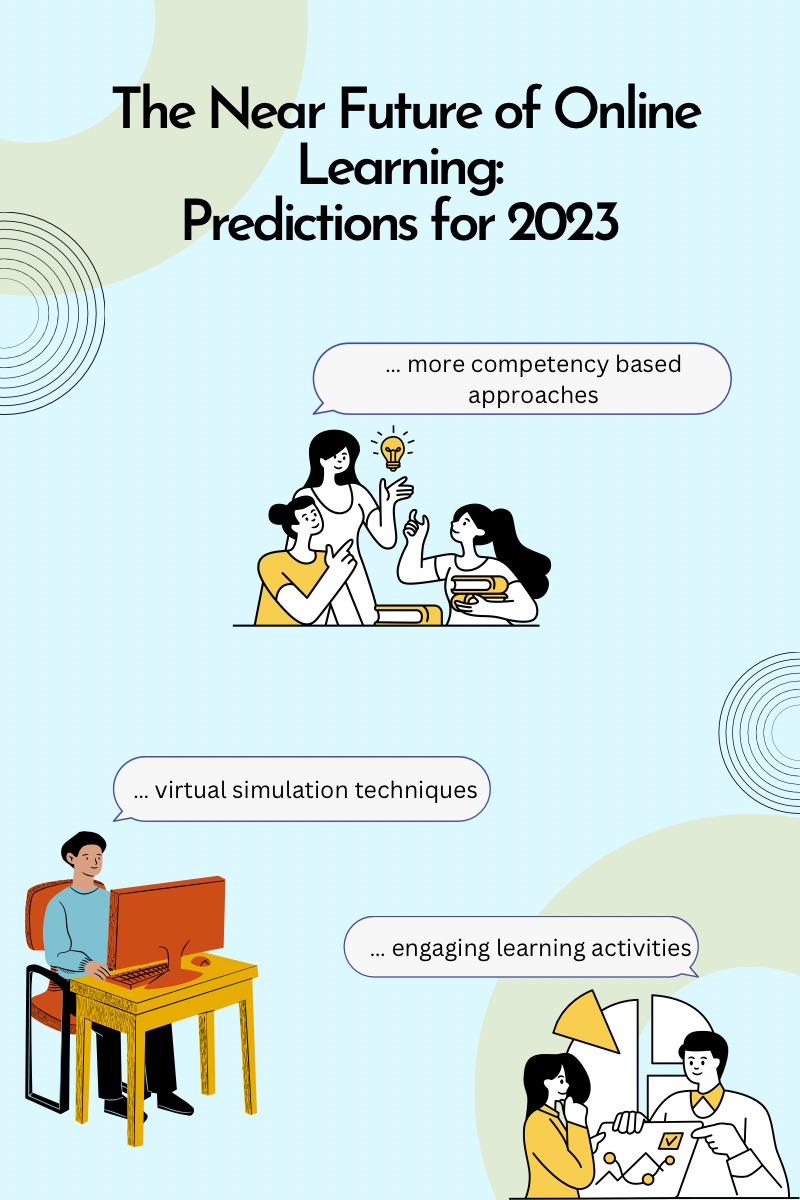Where are the current learning trends taking us? That was the question put to The Babb Group’s Instructional Designers as 2022 came to an end.
“I see more Competency-Based approaches, increased interest in hybrid learning and creating more inclusive content for students from all backgrounds and languages,” said Sheila Fry, COO of The Babb Group.
As usual, human behavior will have to be confronted to ensure academic integrity. That is going to need both technological tools and faculty preparedness.
“A bad trend and maybe something we can talk about for design purposes is the increased use of paraphrasing software to submit previously submitted assignments, or rewording websites, or essays off cheater sites, or the AI tools that scan and pull content for students papers,” Sheila explained, “schools are going to need to tackle the cheating going on.”
The challenges of hybridization of learning are not being dismissed. Educators now have enough experience to define and apply best practices.
“I second the increased interest in hybrid learning with the caveat that mixing modalities in a single session can and does lead to disengagement. One example of that is mixing a group of people in a conference room with a group of people online when the training is being delivered in the conference room,” explained BJ Kennedy. Increased structure and unique activities can be built into learning events that allow each collective (online vs. in-person) to connect with peers in the same modality and improve engagement from all participants. IDs and leadership should be prepared to make the time investment to ensure that all learning participants are included.”
That increased focus on unique online activities will see more students spending more time in virtual laboratories and game-inspired screen environments.
“We’re already seeing increased use of virtual simulation technology and applied learning using simulations!” said predicted Morgan McAfee. “It’s one of the most exciting innovations to watch.”
The technology available to increase engagement means representing the instructor in new ways too.
“I see instructors incorporating more avatar technology for presenting materials to students in unique ways and creating more engaging interactive learning activities that can help to enhance the learning experience for students,” stated Michelle Ross.
That avatar representation of a human instructor keeps the instructor-student relationship at the fore. And that relationship is going to require even more flexibility and imagination.
“I see an increased demand from learners for options across their learning. They want various ways to engage with content, meaning they want a short video, slides, text, and a book or article. They want it all available! They also want multiple ways to demonstrate their learning beyond submitting papers. They want real-world applications they can use to build their portfolios or apply at work. Savvy learners want the opportunity to suggest assignments and ways they can demonstrate their learning,” predicted Angela Bricher. “t is tricky but can also be valuable to students. An example I experienced was a change in delivery method. The original assignment was your basic APA-formatted paper. A student asked if they could do a white paper instead. It would be complete with citations and references, but souped-up with images and infographics because then they could use that white paper for work and would have feedback from me before presenting it. That’s a student I’m willing to give extra time to!”
Latest posts by Kate Baggott (see all)
- How I Lead: Michael Graham, Vice President of Operations and Technology at NLU - March 22, 2023
- The EdTech News for Friday, March 17, 2023: AI Supports Reading Development, Educators Detect AI-Generated School Work - March 17, 2023
- The EdTech News for Friday, March 10, 2023: Families Coding, Mindsets Changing, and Edusity is Educating - March 10, 2023
